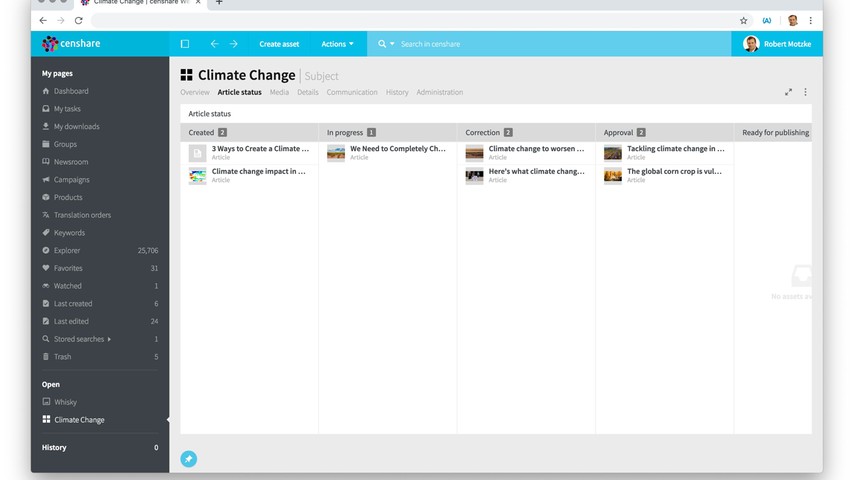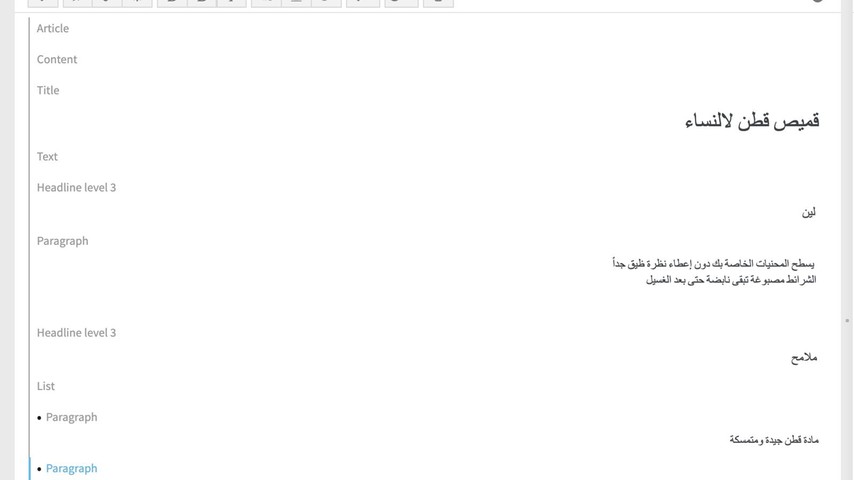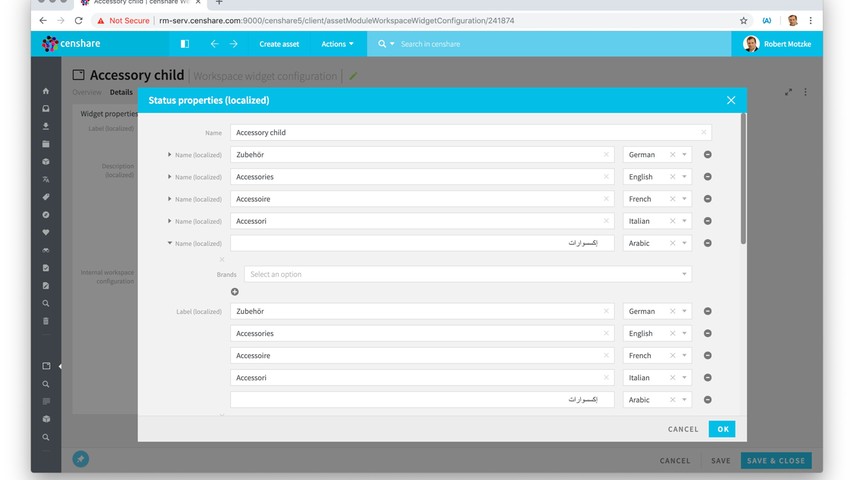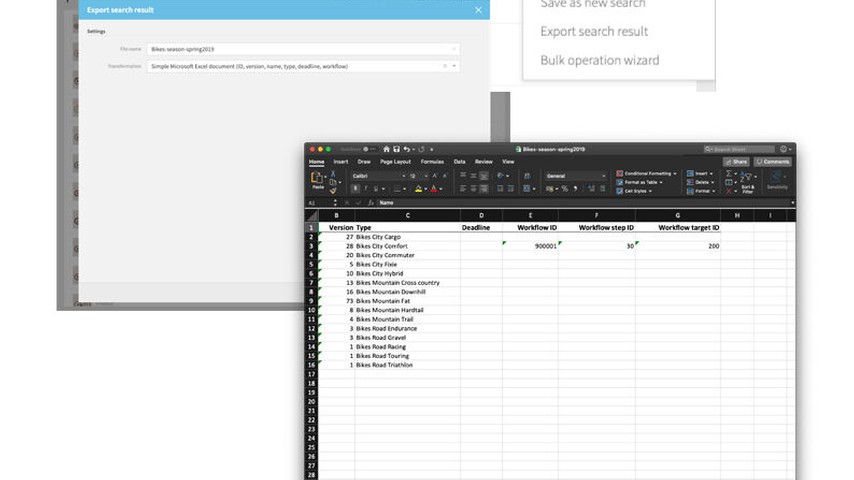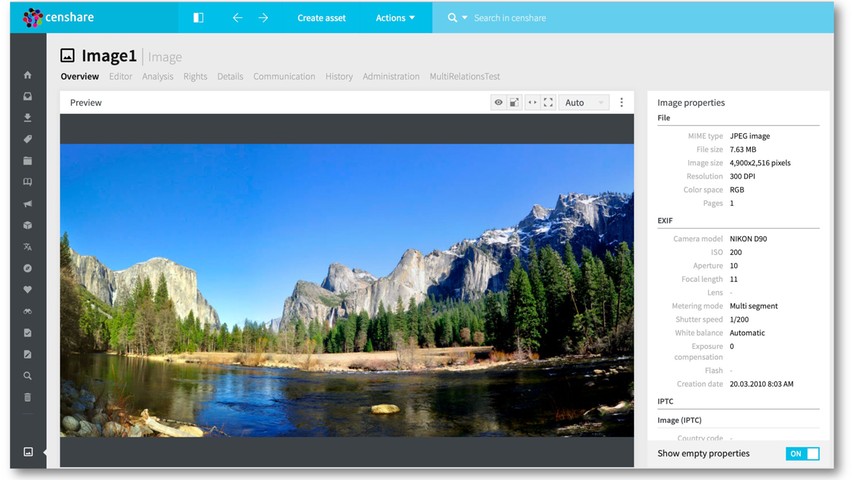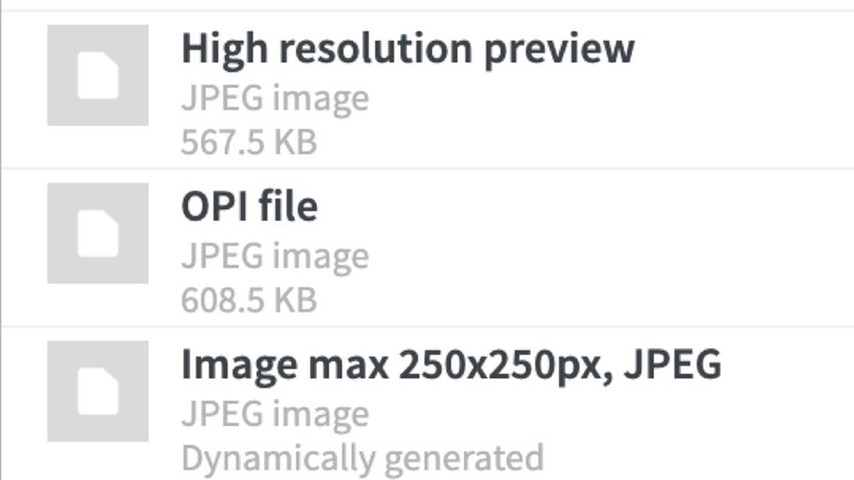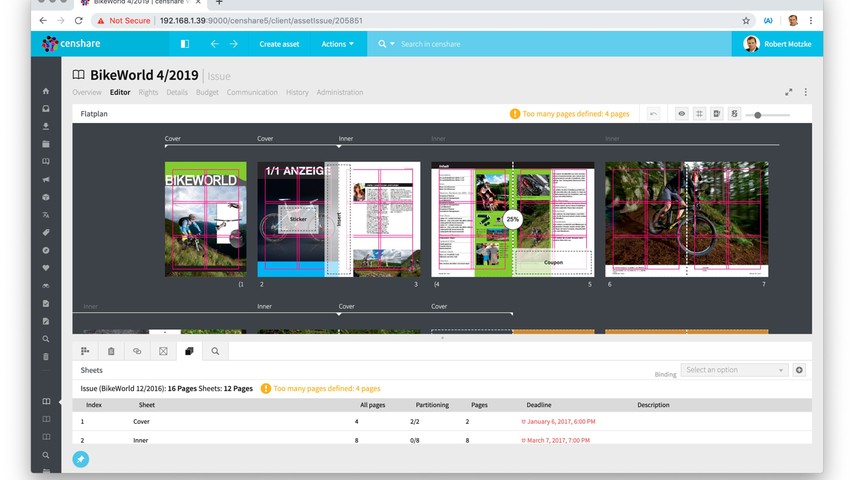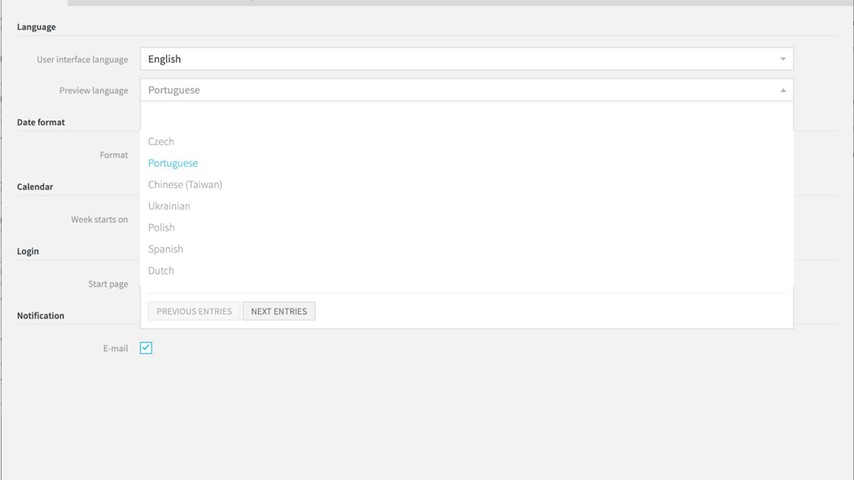Table of contents
- Increasing the value you get from censhare
- Content Management
- New Widget: Kanban Board
- Support for Right-To-Left Languages
- XSLT Enhancements
- Digital Asset Management
- Show and Hide Empty Properties
- Dynamic Download Formats
- Module: Print Production Management
- Flatplan
- Platform
- Moving from Oracle JDK to OpenJDK
- Enhancements to the User Preferences Dialog
- Miscellaneous
- Further Enhancements
- Changes to the search function
- Asset Deletion has been optimized for PostgreSQL
- Dialog validation on the fly
- Better keyboard experience
Download the Release Summary 2019.2 as PDF
Increasing the value you get from censhare
We know that your organization requires a state-of-the-art platform to manage
digital assets and product information for use in marketing campaigns, websites and
publications. That’s why we keep improving censhare by adding new and improving
existing features and functions.
In this release we made several changes, and I think they’re all equally
important – some are small and almost not noticeable while others can make a huge
impact on your business.
For example, I really like the new Kanban Board widget that can help to
intuitively understand all tasks and their status by displaying them all on a single
page, neatly arranged by workflow status.
I’m also thrilled by the fact that censhare now fully supports right-to-left
scripts. This is essential for businesses operating in regions with Arabic
languages, the native language of more than 660 million people around the world.
But we also addressed bugs and issues that were present in previous versions
of censhare.
In this release summary we share the most important changes with you, so you
know what we have done in these areas:
Platform
Content Management
Digital Asset Management
Print Production Management
Miscellaneous enhancements
The release summary covers changes in release 2019.2 which we launched on
18th April 2019.
If you have opted for automatic updates, the changes have been rolled out
already. However, depending on your censhare system specification and individual
use, you may not be affected by those changes and may not notice a different
behavior of the software at all.
If you have not opted for automatic updates but would like to update your
system, please contact your account manager for information on how to upgrade your
system.
The next release, by the way, will be 2019.3 which we plan to launch in
autumn 2019.
Robert Motzke
Co-Founder & Chief Product Officer
Content Management
New Widget: Kanban Board
Get better organized personally, or as a team
Kanban boards are very popular these days as they enable users to quickly
get an overview of tasks that belong to a specific process.
This new widget can flexibly display the asset status in columns, Kanban
style.
Typically, each column will show the status at the top, a count of the
number of tasks with this status and a clickable list of the respective
tasks.
Here’s how to get started with your Kanban Board:
To add the widget to your Dashboard, click the “Page Actions”
icon (the three vertical dots) in the top right corner, then click “Add
widget...” and search for “Kanban”. Select the widget and click
“OK”.Define the query or relation type of the assets you’d like to
show in your board.Define the columns you’d like to see or hide. These can be
defined based on workflow steps or by feature with a value
list.Add the assets (relation types) to each column.
Once set up, you can start using Drag and Drop to intuitively move one or
more tasks from one column to another.
The changes you make in the widget will be applied to the properties of
the assets and tasks. This ensures that users who do not use the Kanban Board
will still see the same data.
What is a “Kanban board”?
A Kanban board helps managing work at a personal or organizational
level. It depicts work at various process stages using “cards” for tasks,
grouped in columns that represent each stage of the process. As a task sees
progress, the respective card is moved from left to right, making the
progress visible. This helps coordinate teams performing the work. Simple
boards have columns for “waiting”, “in progress” and “completed” (or
“to-do”, “doing”, and “done”), but there are more sophisticated views as
well.
censhare’s Kanban Board widget makes it easy to get an overview
of tasks as they are pushed through the creation process. In this
example, articles for a customer magazine move from “created” to “in
progress” and “correction”.
Support for Right-To-Left Languages
Extend your reach to more regions and languages
One of censhare’s strengths has always been its handling of multiple
languages. For each asset you can create as many language variants as needed and
swiftly manage the translation process by using in-house resources or external
vendors.
Now we’ve added support for languages that use right to left (RTL)
scripts where writing starts at the right-hand side of the text and continues to
the left.
This enables you to address more regions, languages and markets using
your existing content and workflows in censhare.
To use this new feature, just open the censhare Admin Client, open the
language table and check the “RTL” field.
The most widespread RTL writing systems in modern times are:
Arabic script and its adaptations to languages such as
Farsi/Persian, Kurdish Sorani, Malayalam, and Urdu (spoken by 660+
million people)Hebrew (14 million people)
This opens up a huge opportunity for further spreading your marketing
content and helps tremendously building a global marketing team that uses
censhare to manage all content and content variants.
By the way, using a RTL script is difficult in most software solutions:
You need to understand which text goes where, how it should render, where to
put correct line breaks, and so on.
censhare is different thanks to its “atomic content” concept that breaks
each piece of content down to the smallest possible information item, e.g. a
headline, a sub-headline, a paragraph, and so on.
censhare now supports right-to-left scripts like Arabic. This
opens a potential audience of 660+ million people around the world that
can be reached with digital assets managed in censhare.
The status properties dialog will show right aligned content if
the property language has been defined as RTL language.
XSLT Enhancements
Easily export from censhare to Microsoft Excel
We always look for enabling users to use common tools when working with
censhare. That’s why we’ve now included a more complete export function for
Microsoft Excel documents.
Using the popular and solid Apache POI (a Java API for Microsoft
documents) we now support configurable exports to Excel. These exports can even
use the same formatting commands as Excel like fonts, formats, sizes and
more.
This can be useful, for example, to export search results, which can also
be product data or other structured information.
A basic example for exporting search results to Excel is included
in the standard version of censhare 2019.2 – To see it in action, simply
click on the page actions (in the top right corner of your search
results) and select “Export search result” to get a list of the search
results in Excel.
Digital Asset Management
Show and Hide Empty Properties
Focus on the metadata fields that have been filled
Modern content creation software provides dozens, if not hundreds, of
metadata fields, ranging from obvious ones like author, description, keywords
and rating to complex content descriptions, for example the location where a
photo has been taken.
Usually only few fields will be used, and most users find it irritating
to see all the empty, unused fields when looking at the metadata of an asset.
So, we do not show empty metadata fields by default.
However, some users had a hard time looking for a specific metadata field
that’s been left empty. To make their lives easier, we’ve added a nifty toggle
at the end of the properties list: “Show empty properties”. If the toggle is
switched off just the fields that contain data will be shown.
You can define in the widget dialog whether you want to see the toggle
and whether it shall be switched on or off by default.
By default, you will see the toggle, and it will be switched off (so you
won’t see empty fields.)
Please note that the toggle is not available for our dynamically built
product properties dialog (in Product Information Management) as this uses the
product categories.
A convenient toggle at the end of the image properties enables
you to show or hide empty property fields.
Dynamic Download Formats
Transforming image files on the fly reduces storage needs and increases
system performance
Traditionally, censhare systems create file transformations as soon as a
digital asset will be uploaded or changed. This ensures that a transformation
can be delivered extremely fast whenever requested.
However, clients who manage many millions of assets may see little (or
even no) usage on many assets. This results in zillions of transformations
having to be created, stored and managed without any significant usage. This
wastes storage and computing power.
As this is a common issue for image files, we’ve now added an option to
create image transformations dynamically, i.e. whenever the respective
transformed image is actually demanded by a user or external
service.
It’s obvious that the amount of storage space is reduced as fewer
transformed images need to be stored. (One might think that the issue is tiny
and irrelevant, but it gets huge quickly: 1 million images x 10 transformations
x 800 KB per transformation on average adds up to a whopping 8 TB just for the
transformations!)
What’s more, depending on the actual usage pattern, users will see an
increase in system performance due to fewer image transformations being
generated in the background.
If an image transformation has been defined as “dynamically
generated” you will see them as usual in the Files widget, so the user
experience won’t change except for the few milliseconds it may take
longer to generate the ad-hoc transformation. A file size cannot be
displayed as it is not known prior to its generation.
Module: Print Production Management
Flatplan
Plan coupons, inserts, stickers and sheet markers in your
layouts
A common task in magazine production is the application of physical items
to a page, for example a removable voucher or postcard, but planning such items
remained a challenge in most layout software and often requires manual
workarounds.
Now we made the flatplan in the Web client even more powerful by adding
new standard objects that can be placed in your layouts:
Coupons
Inserts
Stickers
Sheet markers
This eases the planning, design and review process for users of the Web
client because everyone involved in a project knows the actual content planned
for each page. What’s more, you do not run into the risk of placing an object
twice in your document.
This feature has been available in our native Java client for a while, so
if you’re using both the Java client and the Web client, you can be sure that
these objects will be displayed in a similar fashion, regardless of the client
used.
The flatplan of the web client now provides standard objects for
planning stickers (here on page 2), inserts (here between pages 2 and 3)
and coupons (here on page 5).
Platform
Moving from Oracle JDK to OpenJDK
Oracle, owner of the Oracle Java Development Kit (Oracle JDK), has
changed to a paid licensing model
With the release of Java SE 10, Oracle has started charging for
commercial use of Oracle JDK. This affects anyone who develops software using
Oracle JDK or commercially uses software based on Oracle JDK.
At censhare we used to use Oracle JDK for censhare Server and several
clients (censhare Client, Admin-Client, Render-Client, and
Service-Client).
Due to the new licensing policy we reviewed our use of Oracle JDK and did
a risk assessment:
While Java SE 8 does not require a commercial license, there
won’t be security updates for non-subscribers.Any newer version of Java SE, e.g. Java SE 11 (18.9 LTS) for
business, commercial or production use requires a commercial
license.
Fortunately, there are excellent alternatives available, most notably
OpenJDK, which does not affect our use at all but is available as open source
software and free to use. (In fact, Oracle JDK is based upon
OpenJDK.)
Consequently, with censhare 2019.2 we’ve shifted both the censhare
platform and the censhare clients towards OpenJDK. (
https://www.oracle.com/technetwork/java/javaseproducts/overview/javasesubscriptionfaq-4891443.html)
Oracle JDK aka Java SE (Standard Edition) Development | OpenJDK |
|
|---|---|---|
Developed by | Oracle Corporation (originally Sun Microsystems) | Oracle Corporation, OpenJDK & Java Community, including |
Introduced | 1996 | 2007 |
Release schedule | approx. every 6 months (Long Term Support versions: every 3 | approx. every 6 months |
Support policy | Short term feature releases are only supported until the next | Feature releases are supported until the next feature |
License model | Until Java SE 10: Oracle Binary Code License Agreement | Open Source – GNU General Public License (GNU GPL) version 2 |
Cost | Subscription model for commercial use since Java SE 10 | Free under the GNU GPL |
Open Source Community | Small | Large |
Table: High-level comparison between Oracle JDK and OpenJDK
https://www.oracle.com/technetwork/java/java-se-support-roadmap.html
https://stackoverflow.com/questions/22358071/differences-between-oracle-jdk-and-openjdk
https://blogs.oracle.com/java-platform-group/oracle-jdk-releases-for-java-11-and-later
Enhancements to the User Preferences Dialog
The User Preferences dialog provides an even more personalized experience
now
Customizing preferences is key in providing a customized experience for
censhare users.
That’s why we’ve added more options to the User Preferences
dialog:
You can now define the user interface language for the client.
Available languages are: US English, German, French, Italian, Spanish,
and Japanese.The preview language defines which language will be used for
previews by default, and now it can be set by the users,
too.You can now globally enable or disable email notifications, for
example, to get updates from workflows. Very active users will want to
disable notifications to prevent being drowned by notification
emails.
In the user preferences dialog, you can now also set the default
user interface language, the default preview language, and enable or
disable notifications by email.
Miscellaneous
Further Enhancements
Changes to the search function
We’ve aligned the function of the search function to match the UX of
market leading search engines.
We now start processing a search request and calculate results once the
user has entered the search term into the search field at the top of the screen
and hits “Enter”.
Not only will users be delighted to get the same experience as from their
preferred search engine, but the system performance will further increase
because fewer expensive queries have to be performed.
Auto suggestions are not affected by this, and you will continue to see
auto suggestions for your search term as you type it.
Asset Deletion has been optimized for PostgreSQL
Up until now, the deletion of assets had not been optimized for use with
PostgreSQL, an open source database that can be used free of charge.
As demand for PostgreSQL is picking up, we’ve now released the third
generation of the Asset Deletion function, which has been optimized for
PostgreSQL. It also requires fewer resources and scales better than earlier
versions, especially with large databases.
Dialog validation on the fly
In many dialog windows you will encounter dependencies between the action
you’re about to perform and the metadata of an asset in censhare.
We now determine the rule-based dependencies for each dialog window
during the input, i.e. before the user hits the “Save” button. The user will be
notified of invalid or missing entries right away.
This reduces the time to complete dialogs successfully and significantly
improves the user experience, especially for unexperienced or occasional
users.
Better keyboard experience
Those who use the keyboard to navigate the censhare Web client will be
happy to hear that we further aligned it to best practices in UX
design.
In dialogs you can now use the [ →| ] key on Macintosh ([Tab] on
Windows) to navigate between text entry fields. The active entry field
will be highlighted by a blue rectangle, and the focus will remain on
the active dialog.When you now select an entry in the search results in list view
or column view and use [Shift]+[↑] or [Shift]+[↓] on Macintosh
([Shift]+[PgUp] or [Shift]+[PgDn] on Windows) you will expand or reduce
the selection.
Read also What's new in documentation 2019.2 for further information.
You will find specific documentation, release notes, known issues and more.

